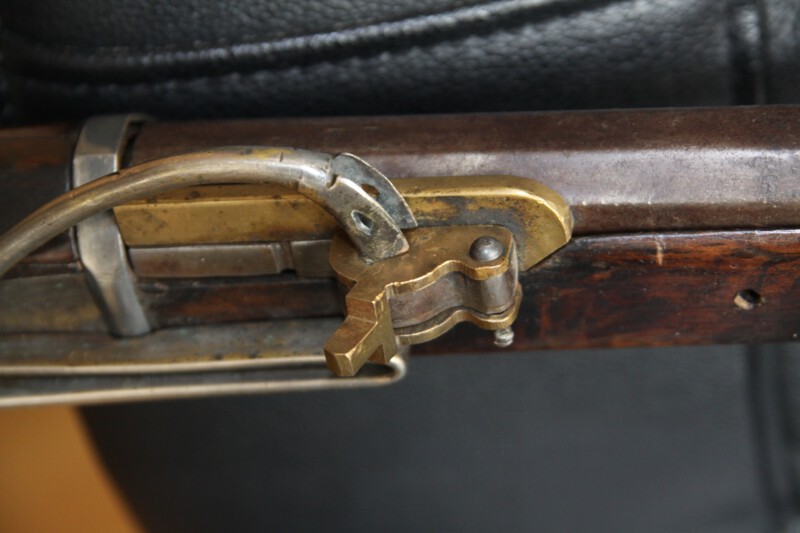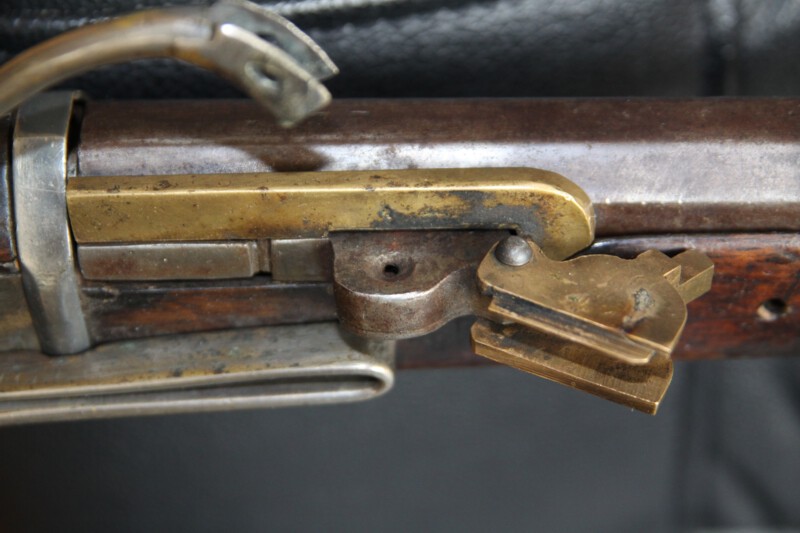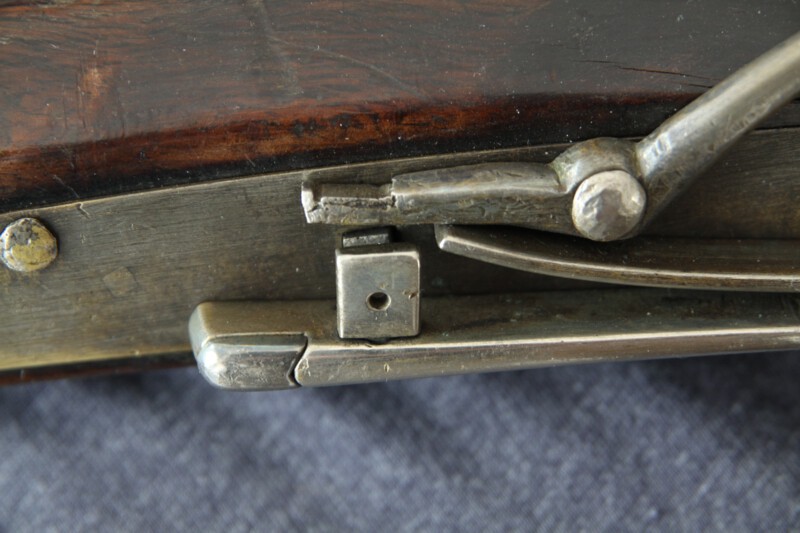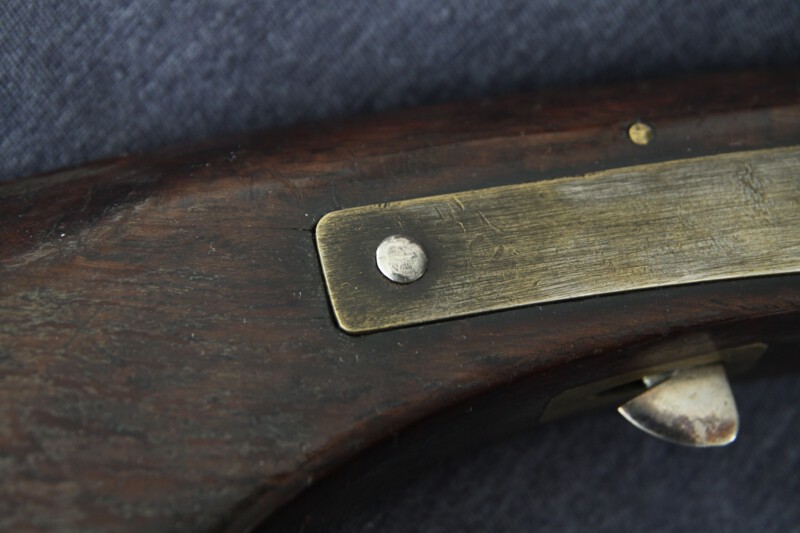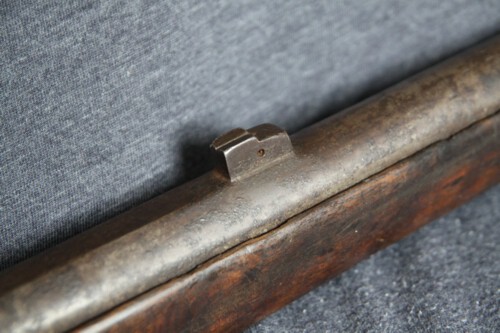
Klop
Members-
Posts
121 -
Joined
-
Last visited
Content Type
Profiles
Forums
Events
Store
Downloads
Gallery
Everything posted by Klop
-
Gentlemen, thanks for your input Kind regards, Eric K.
-
Hi Thomas, Here are the extra pictures. Hamon is visible, it's running straight into the patina. After my previous post I realised that for a nakago with 2 original holes the space between them would be too small so I think that's not an option. I also took shot of the back, you can see the change in thickness due to polishing. What do you think of the hi? Kind regards, Eric K.
-
Hi Thomas, photo "4" is the complete nakago, did you see that? I'll try to make a picture of the hamon near hamachi, and some of the hi. Polish isn't great (ahum) so let's see what we can get. I agree that the hi would be strangely in the middle of the blade if they were present before shortening because the don't run into the nakago. Therefor I'd think they were cut after shortening. Is that what you mean by ato-bori? Can't find this term in the glossary. About suriage or not, my understanding of the term is "shortening". Given the presence of (half) an ana down the nakago it is very likely that there was more before, and also more than a few cm's. Unless it was a nakago with a second ana at the end and someone decided to remove the last 2 cm Kind regards, Eric K.
-
Hello Gents, This was my first civilian sword, I fell in love with it and it's still one of my favorites, even though it's not a perfect or important piece. Nagasa 62 cm sori 1,6 cm Height 2,8 cm / 1,55 cm thickness 7 mm / 4 mm Hamon is suguha in nioi, healthy boshi. It's got some openings and near the habaki what seems to be a battle scar in the mune. Jean mentioned in another thread (about Hirokane in the translation section) that shortening at the mekugi ana was sometimes done on old blades. And somehow I have always had the idea this is a really old blade; koshi sori, funbari, suguha, small kissaki... But how old exactly... Of course "exactly" is a matter of centuries, 16th seems to be the least, maybe 15th or even further back? I would love to hear your thoughts and the motivation behind them! Kind regards, Eric K.
-
Jean, Sorry, you're right, I normally sign my posts, this one escaped my attention. But we're getting a bit off track, this topic is about the signature of "a" Hirokane. Anybody out there who has an idea which one this is? I'll make some pictures of the other suriage blade for a new thread in the nihonto section. Kind regards, Eric K.
-
I see, that's kind of perpendicular to the length axis. then I better not show another blade I have, there they broke the nakago on the ana so it's rough metal with a semicircle. Love the blade anyway :-)
-
Thanks Chris, what I think is really a shame is the recent (still bare metal) attempt at yet another ana. On the plus side someone made an effort to plug the original ana with lead. In what aspect do you mean the suriage is not the best, should the end be more square or...? Kind regards, Eric K.
-
Dear Gentlemen, I just acquired this sword, obviously Suriage, current nagasa is 66,5 cm. shallow sori 0,8 cm height 2,8 cm / 2,0 cm thickness 6 mm / 4,5 mm Also near the twin holes there are two small chisel marks. I come up with "Shinano Kami HiroKane Saku". I doubt the Hiro most. Is that near the truth, and if so is the mei authentic (there is more than one, maybe someone can tell which one this is)? All ideas are welcome. Kind regards, Eric K.
-
Hi Rich, thanks so far, but unfortunately I still don't understand it; A yari nakago is square(ish) so no need for a cross -when coming from the back which is the usual approach. As far as I know tanto mounted yari usually have the cutting edges "vertcially", by that I mean towards the back and belly side of the saya and fuchi. Or do you have a small "horizontally" tanto mounted yari and do the cuts in the fuchi clear the cutting edges of the yari when you slide it on/off - but what about seppa/habaki then? Best regards, EricK.
-
Dear memders, Sometimes i see fuchi of which the base plate has cutouts that roughly create a cross-shape of the nakago-ana, see picture for an example. I can't think of a reason for this. To pass a blade in that shape? Nope... It's seated against the seppa so you don't see it anyway. Does anyobody know the purpose? Best regards, EricK.
-
POSSIBLE BIZEN TANEGASHIMA with Sakai influence
Klop replied to watsonmil's topic in Tanegashima / Teppo / Hinawajū
Piers, You owe me a new keybord, i just drewled over the old one. EricK. -
POSSIBLE BIZEN TANEGASHIMA with Sakai influence
Klop replied to watsonmil's topic in Tanegashima / Teppo / Hinawajū
Hi Piers, I have it on my lap right now, the barrel is octagonal from breech until the rear sight, after that the bottom continues in 3 facettes but the sides and top become round (trisemicirclegonal??). 2 mekugi-ana, one near the breech and one in the middle. No inscriptions unfortunately. The barrel and stock belong together, it's not a marriage. Can you post a similar picture of this area on an original complete gun to show what I'm missing? Thanks, EricK -
POSSIBLE BIZEN TANEGASHIMA with Sakai influence
Klop replied to watsonmil's topic in Tanegashima / Teppo / Hinawajū
Piers, With some delay, here are the pics you asked for. I hope this angle shows what you want, but I can always make other shots. One of the great advantages of digital camera's; quick results and easily deleted :-) Can you tell me (us) what you are looking for in these shots? Best regards, EricK -
POSSIBLE BIZEN TANEGASHIMA with Sakai influence
Klop replied to watsonmil's topic in Tanegashima / Teppo / Hinawajū
Dear Ron, Thank you for all the info, I'll hunt down some oil and make more pictures to show the results later. Best regards, EricK. -
POSSIBLE BIZEN TANEGASHIMA with Sakai influence
Klop replied to watsonmil's topic in Tanegashima / Teppo / Hinawajū
Gents, Thank you for the info Piers, Here are some closeups of the lock parts. Not cleaned steel imho. Ron, I am not familiar with lemon oil. Do I have to milk a Japanese lemon to get that ? But seriously, usually for wood we use bee's wax or antique/furniture wax. That does "feed" and shine but I guess it doesn't penetrate as deep as an oil would. I've googled for Lemon oil but I'm drowning in the results beacuse I don't know what I'm looking for, can you recommend a brand or type? Or possibly an alternative, how about teak or hardwood oil (usually sold for garden furniture)? And once I've got an oil; should I only use it on the outside of the stock or also on the inside where the barrel is embedded? This area is quite dry right now, seems like a place that doesn't get much attention. Best regards, EricK. -
POSSIBLE BIZEN TANEGASHIMA with Sakai influence
Klop replied to watsonmil's topic in Tanegashima / Teppo / Hinawajū
Well Ron, Faster than you expected, here we are! The total length of the gun is 120 cm, the barrel alone is 98 cm with a 12 mm bore. The trigger looks like an axe-blade, no trigger guard and most pieces of the lock seem silverwashed. The barrel is secured by 2 mekugi - rear and middle- and a brass loop near the front. The stock is darkbrownish with a nice tiger stripe. The barrel is unsigned, octagonal up to the rear sight, after that round. It shows some irregular groups of small rectangular "dimples", in some cases still filled with what looks like steel. Welding flaws that have been repaired (umegane)?? Based on the two mekugi-ana I think of Sendai, otherwise Bizen because of the trigger and the butt of the stock. I'm curious for your opinions -and what they are based on. Thanks, EricK. -
POSSIBLE BIZEN TANEGASHIMA with Sakai influence
Klop replied to watsonmil's topic in Tanegashima / Teppo / Hinawajū
Dear Gents, Thank you for the offers to help. I haven't posted a picture yet but still you might have seen the gun before as I bought it from a forum member (indirectly through an add in this forums "for sale" section). First I'll do my homework, and then when I reveil it you can confirm or correct my findings. Best regards, Eric K. -
POSSIBLE BIZEN TANEGASHIMA with Sakai influence
Klop replied to watsonmil's topic in Tanegashima / Teppo / Hinawajū
Thanks Piers, Found it, with this I should be able to link my gun to a school. Best regards, Eric. -
POSSIBLE BIZEN TANEGASHIMA with Sakai influence
Klop replied to watsonmil's topic in Tanegashima / Teppo / Hinawajū
Hello Ron, Thank you! I'll have a google. Best regards, Eric K. -
POSSIBLE BIZEN TANEGASHIMA with Sakai influence
Klop replied to watsonmil's topic in Tanegashima / Teppo / Hinawajū
Ron, Nice piece! As are the others you've shown. I think these guns are very interesting, but I now next to nothing about the styles, names of the parts, different locks etc. I Would surely like to learn some more, do you know if a book in english with nice pictures and explanations on the subject is available (title, author, possibly ISBN-nr)? Thank you, Eric K. -
I think that sometimes this seller has nice items, but it is true that most things are recent. There is a pattern in the descriptions; "old / little old" usually means made last week. When it is really old the description mentions "genuine" and "edo", and often the starting price is set accordingly. Starting at $ 10 is an indication of replica or fatal flaw. Watch the closeups carefully and ask for extra pictures when in doubt. In my experience he answers questions honestly; I asked about a suspected crack once (cannot remember hagire or ware) and he admitted it was. After buying my yarinata viewtopic.php?f=15&t=6822 last december I got the same story that EMS wasn't possible. As far as I know Tokio-Amsterdam is a nonstop flight, that didn't seem to matter. The sellers default shipping conditions are not up to date as these still mention EMS. Anyway, I decided to take the chance, the journey by boat took about 1,5 months but it arrived safe and sound. Although not traceable online the shipment was registered and barcoded and I had to sign for receipt. Seems relatively safe, at least it's not just fire and forget. Of course everyone has to make their own decision at what point the risk seems too high. Good luck, EricK.
-
Gents, thank you for the "thumbs up" I would love to see those huges blades of yours! I'm sorry I didn't share sooner.... It turns out there are several ways to achieve the same result. The easiest; get a fukuro yari! But somehow the Japanese themselves favour the nakago type considering the production rates. The burning with hot bar poses another issue to be dealt with; the nakago tapers so when getting deeper the hot bar must become thinner? Or just burn a equally sized hole over the entire length and prevent rattling by inserting a loose wedge? Henry, can you tell us how your friend solved this? Carlo, Unfortunately I haven't got a naginata nor have I seen the pole concept on these. Difficult choice; splitting like a sword tsuka or the tunnel idea again. When tunneling I would pick the flat side of the pole so the back and belly wood stays intact. Second argument is that because of the shape of naginata nakago this approach is easier to achieve a good fit. Mariusz, I didn't mention earlier; Before chiselling the tunnel you could make two lenghtwise cuts with a saw to create the walls of the tunnel. What's between these two cuts can be removed more easily. I feel a Japanese type saw with action on the pulling stroke works better than a western push action. Will you show us your results? Kind regards, Eric K.
-
Hi Mariusz, I have seen 2 poles "naked" and both were of the U-shaped type where as much of the original wood as possible is left intact. This produces 3/4 of ongoing fibres instead of 1/2 when the topsection is split in half like a sword tuska. A tapering tunnel is chiseled out for the nakago and then a new wedge of wood closes the gap. The inserted wood was not oak but a lighter wood. After closing the gap reinforcement like strings, laquer, same and metal rings can be used. I noticed that on the ribbed pole it were all individual strings. Of course a spiral of one piece would be easier to make but if cut the whole thing could come off. With individual strings if a few are cut the rest will remain intact. As I understand it the long nakago is also an internal protection against the pole being cut through. In the west long strips were used on the outside of the pole for the same purpose (and have a look at sodegarami, in this case spiked strips prevent grabbing the pole). Here are some pics, one of an original pole and a few of a pole I made from oak following the same method (shimosaka yari, head 30 cm, tang 30 cm). Working the pole is easier when it isn't round yet, when the lid is glued in place just remove what's not needed anymore. Kind regards, Eric.
-
2 in one; translation and what is it - ceremonial Yari?
Klop replied to Klop's topic in Translation Assistance
Oh, now I think of it, could someone provide me with a closeup picture of an original naginata-mounting where the blade meets the shaft? I'm interested in the metalwork that should be there (ferrule- seppa- tsuba- seppa- habaki?). Thank you, Eric. -
2 in one; translation and what is it - ceremonial Yari?
Klop replied to Klop's topic in Translation Assistance
Gentlemen, thank you very much for your help! I think this blade was just put in an available naginata shaft ; the shaft has one hole which does not line up with the mekugi ana in the nakago when the machi are resting on the tip of the shaft. Lining up the ana produces a gap about 2 cm between shaft and blade. But the real give-away is that the space in the shaft (nakago ana?) is wedge shaped as a naginata nakago, this nakago is flat. Btw, the shaft has been shortened (probably for shipping restrictions), just 147 cm and on the tip side some hasty painting was done to "restore" lacquer loss. But of course shortening a pole would be done on the butt side, fortunately the metalware has been moved up and still fits nicely. Some pictures of the shaft attached, it's not in great shape but the fittings are nice and complete. Best regards, Eric.












